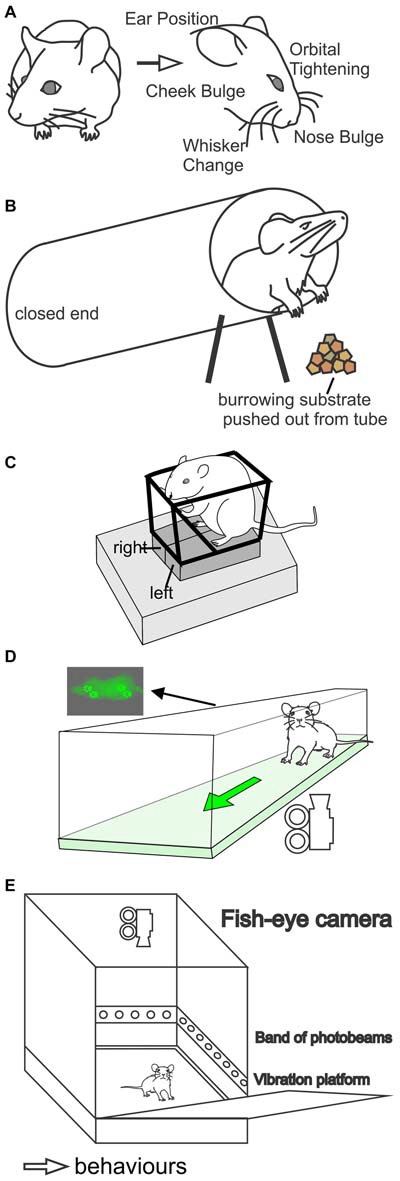Figure 6.

Methods used to assess non-stimulus evoked pain behaviors in rodents. (A) Grimace scales. Facial expression is subjectively scored for severity of pain based on five facial features (ear position, eye closing, cheek bulging, whisker position, and nose bulging). (B) Burrowing assay. A burrow is placed in the cage of a rodent filled with a suitable substrate (such as food pellets, sand, or marbles). The amount of substrate displaced over a set period of time is recorded. Pain in rodents is associated with decreased burrowing behaviors. (C) Weight bearing (incapacitance test). The rodent is placed in an inclined holder with the hind paws resting on two separate pressure sensors. Weight distribution between the hind paws is recorded. (D) Gait analysis (Catwalk XT, Noldus). In this assay rodents walk freely across an enclosed elevated glass floor. A camera below records the paw prints, which are illuminated by internally reflected light in the glass. A number of parameters are automatically analyzed by the software, including paw intensity, print area, stance phase duration (time spent on paw) and swing phase duration (time spent off paw). (E) Behavioral Spectrometer (Behavioral Instruments). Rodents are placed in an enclosed box with a camera, accelerometer and wall-mounted photobeams for a set period of time. The software records the duration of different behavior types, including movement, grooming and rearing behaviors.
